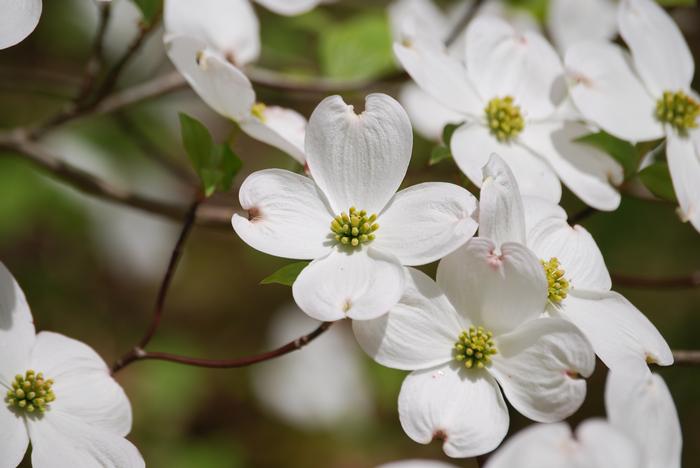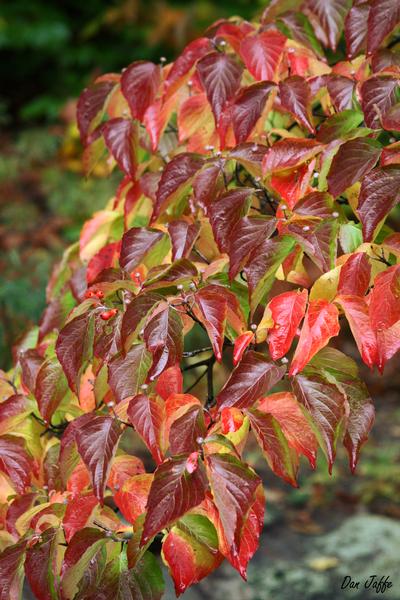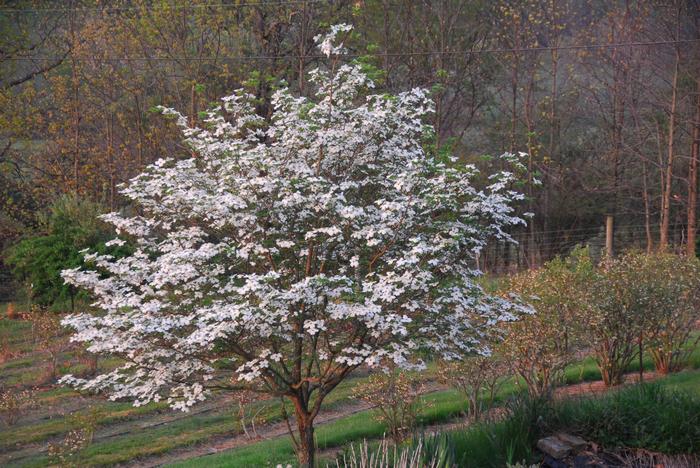General Description
Bloom Description: Four large white bracts (modified leaves associated with flowers) emerge around the true flowers before the plant leafs out, in May.
Growth Habit & Shape: This species started out as an understory tree before becoming ubiquitous in the planted landscape; its size remains small, and the crown can be round, oval, or umbrella-shaped depending on light conditions and pruning.
Soil Preferences: Benthamidia florida grows in rich, acidic, well-drained soils that are neither dry nor particularly moist. It does fine in average garden soil, and will tolerate clay soils as well.
Root Description: Roots are fibrous, relatively shallow, and spread laterally.
Garden Uses: Flowering dogwood is a lovely specimen tree in the garden. Its compact growing head and nice flower display make it a choice garden plant. It can also be used for naturalizing in woodlands.
Best Management & Maintenance: This small tree is susceptible to a number of diseases, especially when stressed by suboptimal growing conditions. Plant in well-drained, acidic soils that are rich with organic matter. Allow sufficient spacing between trees and make sure that the base of the trunk is interplanted with herbaceous plants, but avoid mowing or weed-trimming near the base of the tree, as damage to the trunk can enable entry of fungal pathogens or insects.
Common Problems: Anthracnose is the biggest threat, but powdery mildew, leaf spot, canker, root rot and leaf and twig blight are also common. Make sure there is good air flow around the trees to prevent fugal infections. Borer and leaf miner can also become problems for flowering dogwood.
Benefits
Wildlife Benefits: The berries provide food for birds, and this genus, which is often grouped with the genus Cornus, supports over 100 species of butterflies and moths throughout their life cycles.
Use in place of: Rosa multiflora, Lonicera japonica
Ecology
Habitat:
Before the proliferation of Anthracnose, this species was integral to the sapling layer of deciduous, mixed, and pine forests throughout New England.
Response to Disturbance: N/A (no longer widely present in the wild)
Native State Distributions:
Canada: ON
USA: AL, AR,CT, DE, D,C., FL, GA, IL, IN, KS, KY, LA, ME, MD, MA, MI, MS, MO, NH, NJ, NY, NC, OH, OK, PA, RI, SC, TN, TX, VT, VA, WV. Also present in Mexico.
Wetland indicator status: FACU
References
Return to Top



